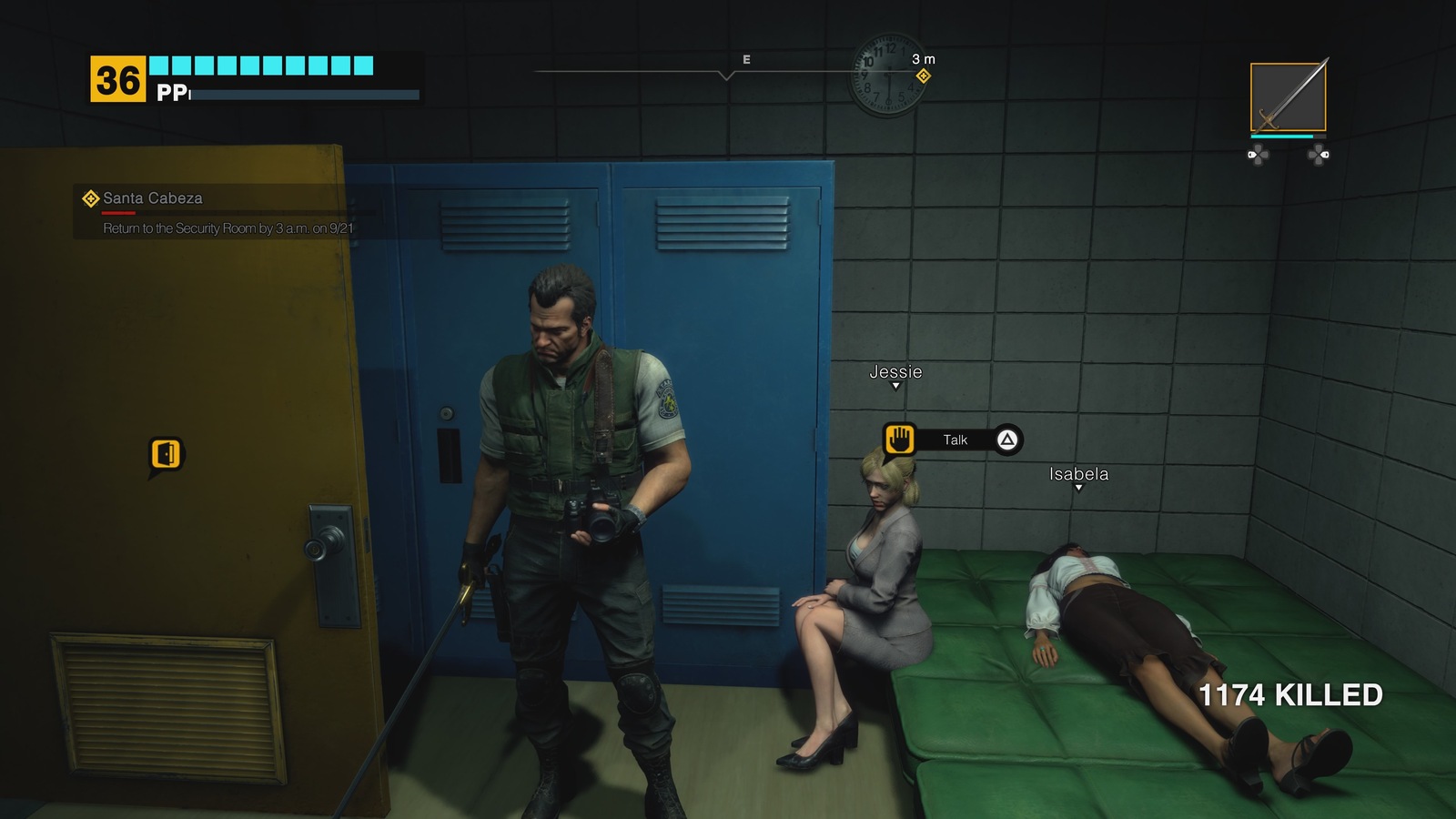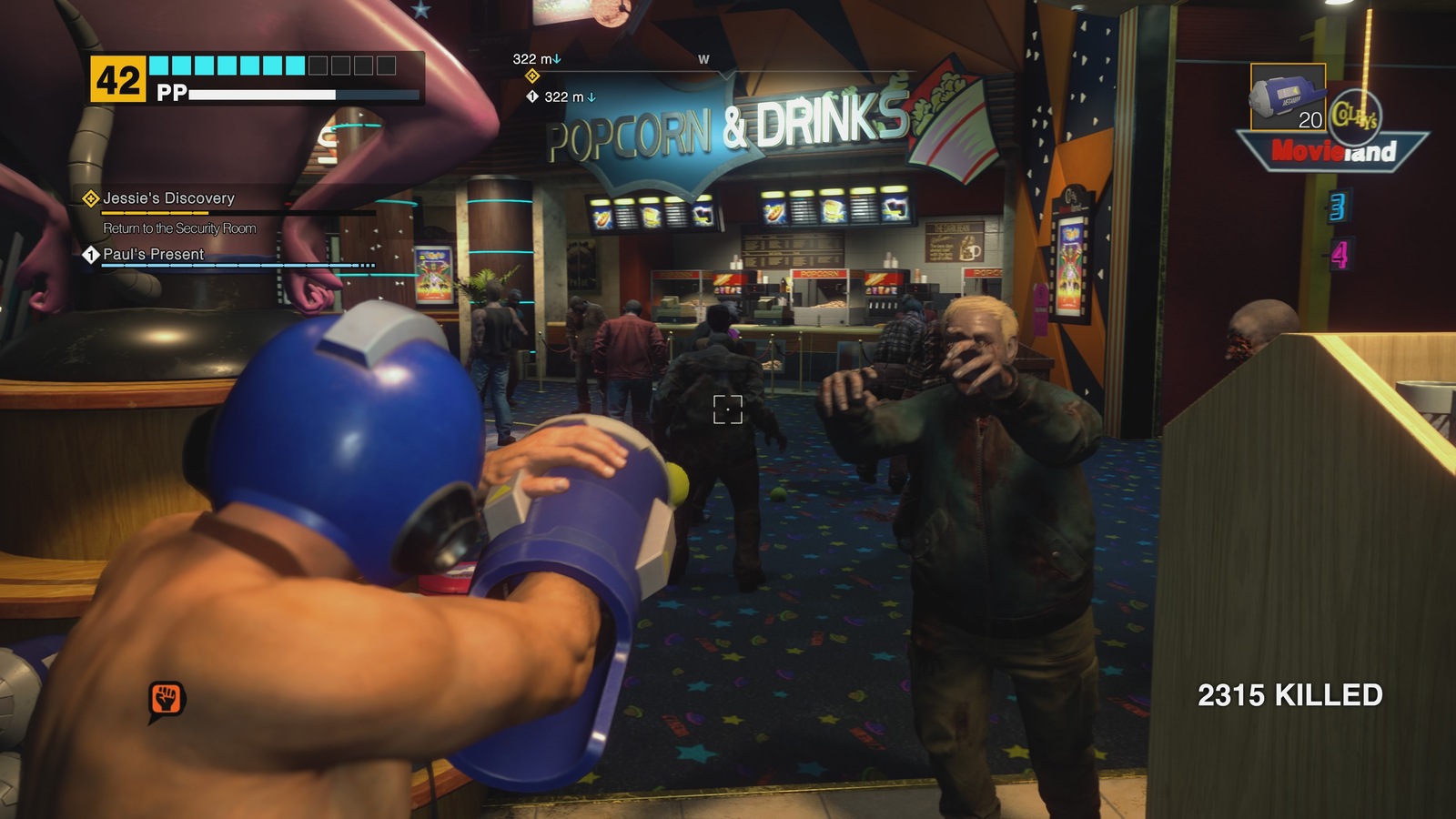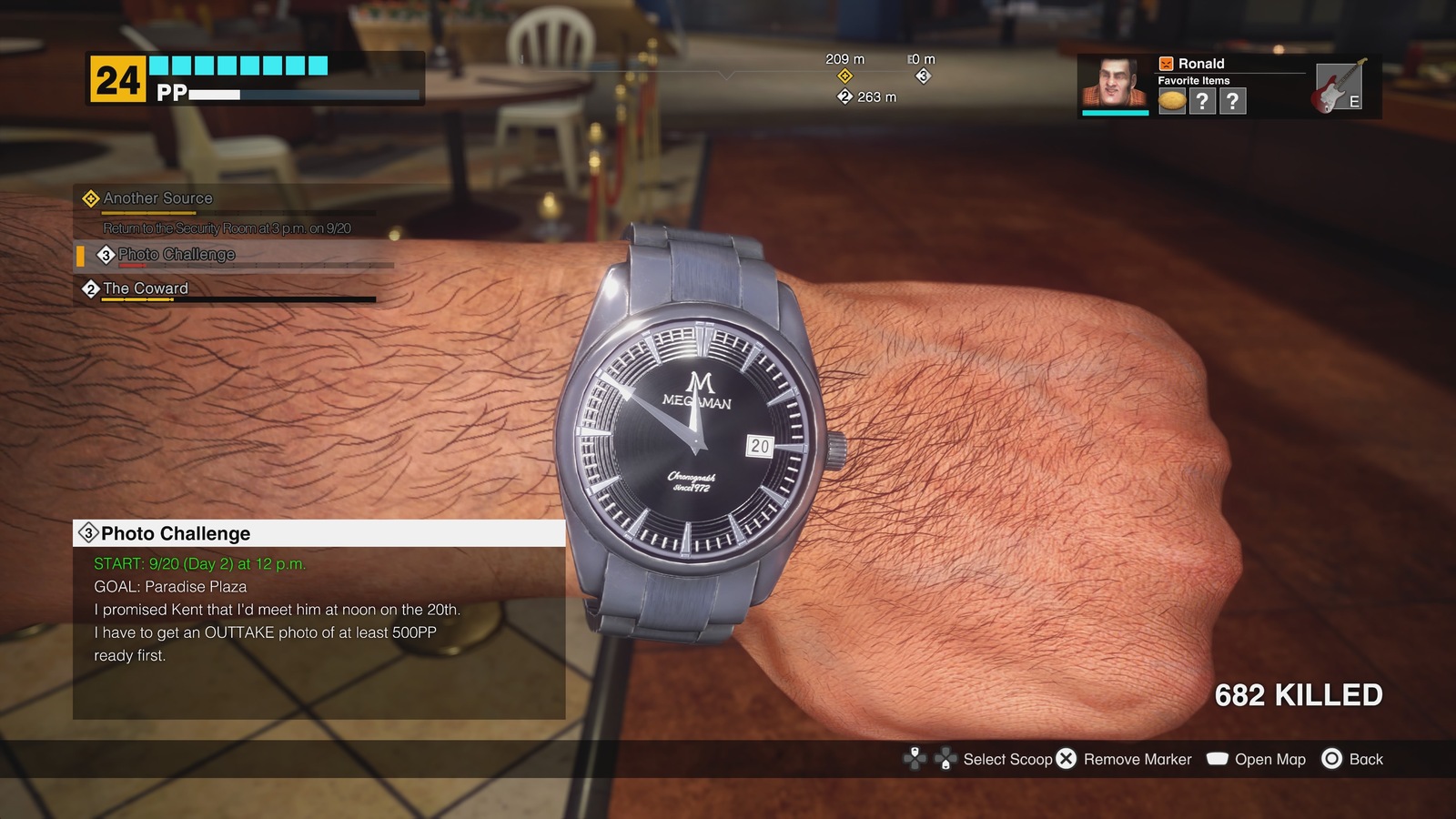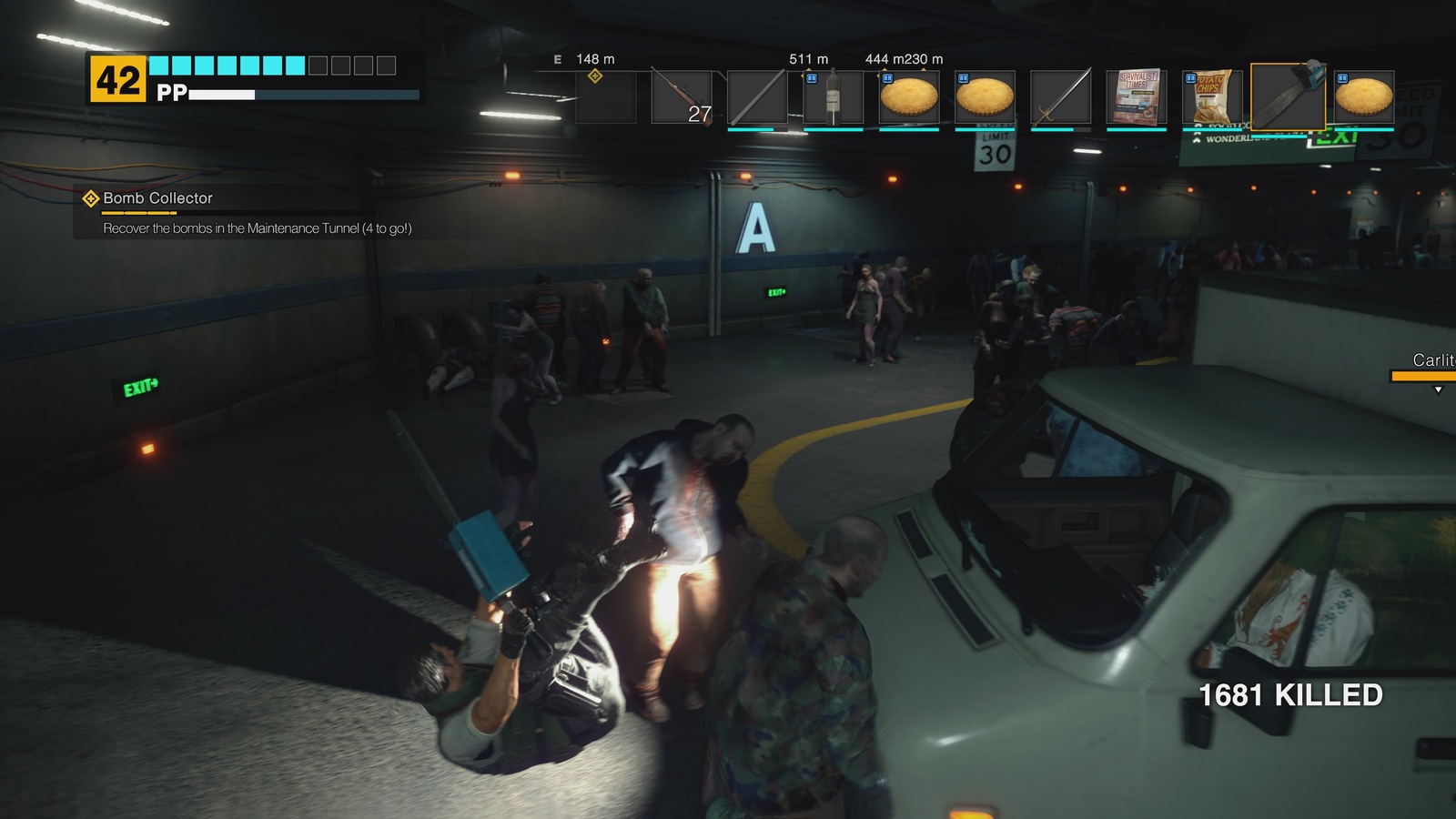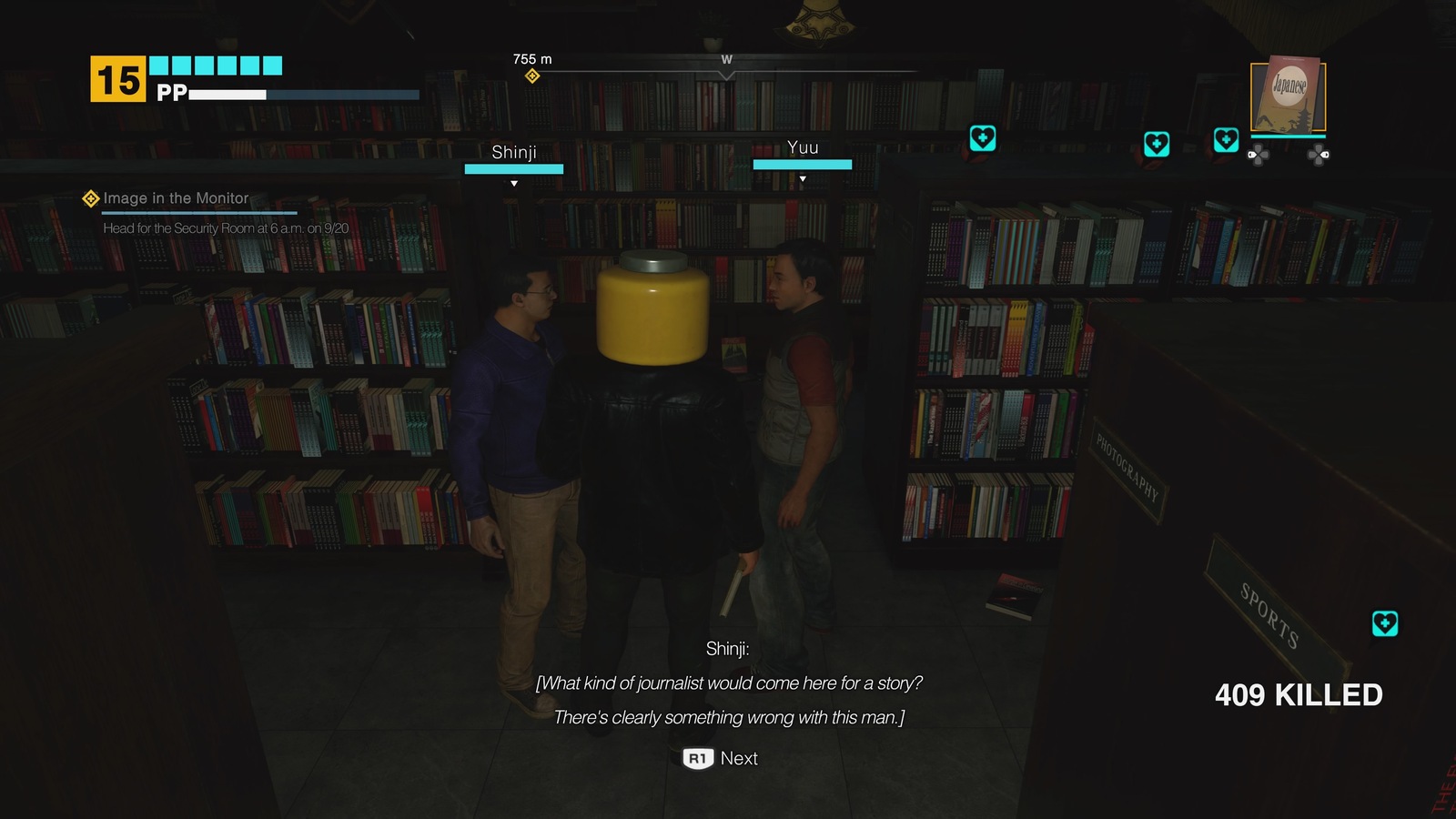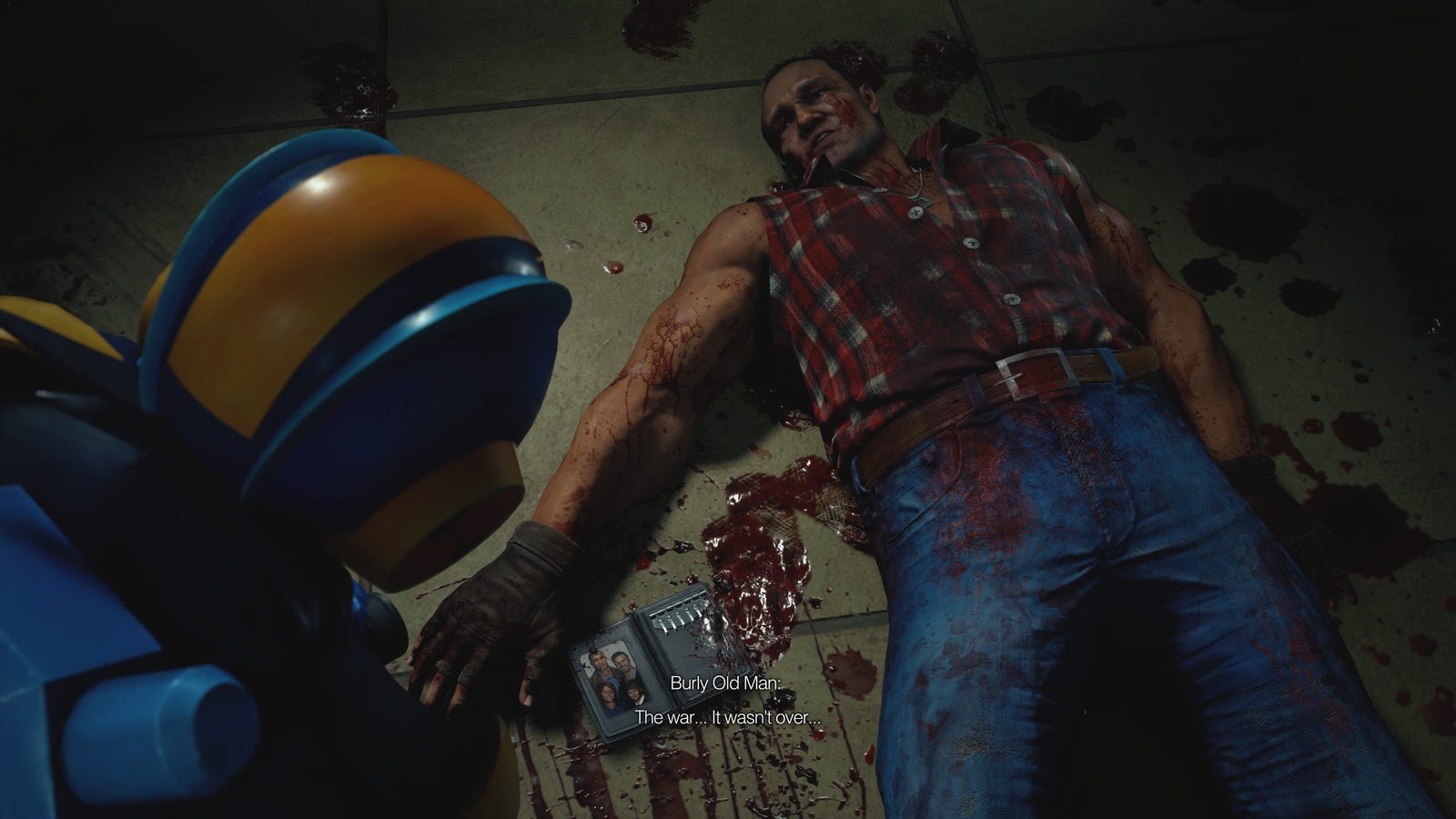Technology changes how we see the world. While it most often affects our view of the future, it can also change the past. Information aggregation, digital restoration, remakes, and various other methods of preservation keep the past alive with the caveat that whatever technology touches will cease to be exactly what it was before.
The Dead Rising Deluxe Remaster demonstrates technology’s penchant for change in interesting ways. At its core, the Deluxe Remaster is the original Dead Rising. The fundamental premise, plot, game design, and animations remain as they were back at the time of its release in 2006. Layered on top of that game are entirely new visuals, mostly tasteful mechanical additions, and tweaks to details both big and small throughout. More than a faithful remaster yet less than a full-on remake, Deluxe Remaster is as strange of a beast as its “Deluxe” moniker makes it sound.
Often projects like these aim to be a time capsule of things as they were. I found the Deluxe Remaster to be far more representative of the world in 2024 than in 2006. Given that a faithful remaster of Dead Rising already exists, it’s hard to say that this difference is 100% good or bad. Either way, it’s undoubtedly an interesting subject worth discussing.
Not to oversell it to anyone who isn’t me, but the original Dead Rising is one of the greatest games ever made. Dead Rising gives players a simple mission: enter a shopping mall full of zombies as journalist Frank West, figure out what’s going on, and survive for 72 hours so that Frank can bring the truth back home with him. Frank’s watch ticks down in real-time, encouraging the player to prioritize and thoughtfully consider their actions. The game design borrows from principles established by early survival horror titles like Resident Evil, particularly the limited inventory, zombies, and emphasis on, well, survival. It then evolves those principles with a sense of freedom, extending them into a large, interconnected open world full of hundreds of different items that players can use to survive.
And yes, you kill zombies. Dead Rising maintains a reputation for being a zombie killing simulator, providing countless weapons and bizarre ways to interact with the undead. I find that the true appeal of Dead Rising lies almost wholly separate from this particular marketing hook. Zombies play an important role in Dead Rising’s appeal, but the fun of killing them tends to be overblown. Killing zombies lacks depth or purpose on its own. If Dead Rising were just about killing zombies, it would be boring – the kind of game you mess around with for an hour and then drop.
Dead Rising has proven far more undying. The brilliance of its design lies not in the act of killing zombies, but in how it ties the zombies into its overall survival structure. Zombies work as obstacles. Although weak individually, they can easily swarm and overwhelm anyone attempting to run through a crowd of them. As the game tasks you with advancing the main story or saving other survivors in the mall, navigating through and around the undead hordes serves as the game’s main source of tension.
The zombies (and other enemies introduced later in the game) force the player to become savvy about how they traverse the mall. Dead Rising provides a lot of freedom, but the most interesting uses of it tend to be in the name of efficiency. Detours may take longer, yet will expose you to less hazards. Intrepid exploration and dutiful mission completion will reveal hidden shortcuts. Pros will take note of which items can be found where and then create paths through the game that keep them stocked up on the right tools for each job. A strong combination of weapons, health items, and effect-giving books can turn a nightmare scenario into a comfortable, if gruesome, daydream.
Time pressure, tense navigation, and learned efficiency combine to create the real Dead Rising. Far more than a zombie killing sim, it instead realizes survival horror gameplay on a far grander scale than anything that had been released at the time. Virtually no other game, including its own sequels, capitalizes on Dead Rising’s strengths in the same way.
Dead Rising’s unique game design immortalizes it into an all-time classic, so when a “Deluxe Remaster” of it comes along, I can’t help feeling somewhat defensive. We already have several games worth of bad changes made with the intent to “improve” the original’s design. Whatever a development team tries to directly add to the original at this point needs to be tasteful.
To its credit, Deluxe Remaster keeps the core appeal of Dead Rising intact. Frank moves with all the quirks he originally had. The layout of the mall and all its items stay just as you left it. Enemies will still stunlock Frank for devastating combos. AI for the survivors will still get caught up on zombies and possibly level geometry (although not nearly to the degree it happened before). Thoughtful navigation and preparation will win the day. Dead Rising remains its uniquely engaging and sometimes inconvenient self.
Most changes to the gameplay experience come in the form of smaller adjustments. Controls have been reshuffled for “modern” players, although a classic layout still exists. Otis the mall janitor frequently calls Frank to relay information about the goings-on of the mall, and previously Frank had no choice but to drop everything and listen to him. Now, you can do as you please while listening in, preventing inconvenient hold-ups to the action or unintentionally making yourself a defenseless zombie snack. Frank can also now freely move while aiming a gun. Dead Rising’s combat always emphasized your overall fight strategy more than the moment-to-moment actions, and I don’t think that this addition changes that balance.
Two big changes sneak in amongst the smaller ones. First, Frank can now speed up the passage of time at save points. I respect the time management system a lot – it gives the game a sense of reality. Sometimes you need to wait for the world, rather than have the world wait for you. You can’t speed up life so it follows that you can’t speed up your undeath either. However, in this situation, you gain more than you lose.
For replays especially, this change makes a lot of sense. Once a player knows the schedule of the game and can efficiently clear tasks with time to spare, they’ll find that sometimes they have entirely too much time to spare. You could dedicate that time to playing around with zombies or grinding experience points, but those activities lose their appeal after the first run through. The downtime otherwise adds little to the game aside from realism, and there are still some situations where it’s not convenient to speed up time. This change gets an enthusiastic “Fantastic!” from me.
I’m less enthusiastic about the new autosave system. Basically, the Deluxe Remaster creates a save file whenever you enter a new area of the mall or begin a boss fight, which can then be reloaded instantly in the pause menu. The original game relied entirely on set, manual save points. It was up to you to plan out where and when to save. When you died, you felt it and would often need to retrace your steps back to your destination. Now if you die or make a mistake, a quick reload will instantly solve your problem.
I can already hear the excuses for this inclusion. Perhaps something along the lines of “I have 3 mortgages, 12 cats, and 1.5 girlfriends, I don’t have time to waste!” or “you don’t have to use it!”. Those are fair points. You don’t technically have to use the autosave. But you will! It’s the first option to pick on the game over screen! The fact that it even exists as an option taints your decision-making. Time is money and money is less Dead Rising to play, or something like that.
On some level, I believe it falls to the developers to protect the integrity of their game. Otherwise, you risk people coming away from it with the wrong impression. Whether anyone wants to admit it, modern video games are conditioning their players to be less patient and accepting of short-term inconvenience, even if it may lead to a better experience in the long term. This trend creates problems when some of the most interesting kinds of game design, like say Dead Rising’s, rely on inconveniencing the player in the short-term.
For example, take someone who treks all the way across the mall, dies in a boss fight, then continues from an autosave. Will they re-think things, learn the mall’s layout, and identify where the right resources are before challenging the boss again? Or will they just brute force their way through the fight by trying it over and over in their current state? Losing progress in the moment may be frustrating, but it creates incentive to approach things differently. The autosave system discourages that approach, especially for newer players who will likely come into the game with less tolerance for short-term inconvenience.
Now, whether it’s better for players to drop the game due to frustration or brute force their way through without understanding it, it’s hard to say. What I can tell you is that it’s likely they deluxe remastered this game in particular because the people at Capcom know the original Dead Rising has passionate fans that appreciate and understand it. Those fans appreciate the design because the game forced them to.
If you create a new fanbase of people who don’t appreciate what the game is doing, you get weird feedback that hurts potential future entries. Dead Rising already fell apart as a series once due to feedback based on misunderstandings of its appeal. Dead Rising 3 and 4 in particular doubled down on ways to kill zombies (the least interesting part) and deemphasized things like the timer and thoughtful navigation (the sources of the game’s tension). Based on the changes present in the Deluxe Remaster, I’m not convinced that the developers at Capcom know exactly what a new Dead Rising would look like outside of “a little more like the first one, probably” and the lack of confidence in its design as demonstrated by the autosave concerns me.
Modern conveniences also combine to invalidate the game’s secret Infinity Mode. The idea behind the Infinity Mode is to turn the mall into the ultimate endurance challenge. The mall becomes a sandbox without a set ending; the game goes on forever, provided you can survive – with the added challenges of your health slowly ticking down and all other survivors becoming hostile. I’m not going to pretend that I’m a big fan of the Infinity Mode. My dislike of it stems from the absurd time commitment. It’s a fun idea, but the game only doles out rewards for surviving past the 5 and 7 day marks, with time progressing at the same speed as the original mode. Tedious to put it lightly! The Deluxe Remaster addresses the tedium by allowing you to fast forward time and make suspend saves.
Whereas in the original you needed to essentially block out a day of your life to babysit your Xbox 360 for 14 hours, now you can speedrun the mode and recover from mistakes with well-timed saves. These changes address my biggest problem with the mode, I suppose, but they neuter it to the point I still don’t care to play it. Might as well just give me the laser sword and Ghost N’ Goblins boxers!
Also neutered is Dead Rising’s social commentary. Dead Rising takes direct inspiration from George Romero’s Dawn of the Dead. Setting the game in a shopping mall of zombies makes that obvious enough, but the inspiration runs deeper than that. Dawn of the Dead has often been viewed as an open critique of American culture and economic class divide, and Dead Rising picks up right where those critiques left off. How the game satirizes consumerism, corporate and government exploitation of suffering, and the unscrupulousness of journalism are huge parts of its identity.
Yet oddly, the Deluxe Remaster makes changes that dull its biting tone. One of the psychopaths, Cliff, is a Vietnam war veteran who snaps in one of the more tragic scenarios in the game. In the Deluxe Remaster, however, he doesn’t actually mention anything about Vietnam. Given how the game portrays the government, you’d think it would be a connection worth making, yet the game now conspicuously shies away from doing so.
Probably the most controversial change: Capcom recently released a statement confirming its removal of “Erotica” points – points you’d gain from taking pictures that the game considers sexy. You can still take sexy pictures, the game just won’t reward you for them. According to Capcom, “when considering Frank’s situation, it is not an appropriate reward for survival and not a skill required of a journalist trying to stay alive.” For reference, “funny,” “dramatic,” and “brutal” pictures equally unrelated to Frank’s survival still reward points.
Capcom’s obviously untrue explanation aside, the absurdity of awarding you for sexy photos during a zombie apocalypse was exactly the point. The “Erotica” category almost certainly derives from the tabloid nature of journalism – particularly the kind prevalent during the time of Dead Rising’s development, where upskirts and other invasive photos of celebrities were a hot commodity. Despite having some heroic qualities, Frank is a fairly sleazy character. He inserts himself into the game’s scenario purely for personal gain. In his own way, he exploits the suffering of others just as much as those responsible for the zombies. Removing these types of points removes a part of Frank’s character and a part of what the game is trying to say about people like Frank.
Now, I won’t tell you that these changes ruin the game or are part of some grand conspiracy. I see these changes as less about appeasing any particular crowd and more as a poorly thought-out attempt to avoid controversy altogether. However, they do make the game feel noticeably different. These changes suggest that potentially uncomfortable satire is not welcome in a mainstream product in 2024 the same way it was in 2006.
If you don’t notice those changes, however, you will at least notice the graphics. The visuals are clearly where the most effort went in this remaster. And well, it looks good? I feel bad because despite the effort, I feel like the graphical changes are the least interesting part of the package. The realistic lighting and texture upgrades certainly add depth and realism to the mall, and the gore on the zombies looks especially gruesome. I just don’t know if I needed that depth – I already liked how the game looked, so the refreshed visuals do little for me aside from serving as an interesting curiosity. Yes, this is indeed approximately what Dead Rising would look like if it were made in 2024, and that’s about all I have to say about that!
The Dead Rising I love the most, though, was made in 2006. That Dead Rising was bold. It did not compromise on its game design or its narrative. It may not have the best graphics now, but it gets the job done. When comparing it with the Deluxe Remaster, I can’t help but be disappointed in the new version.
If they were going to do a project like the Deluxe Remaster, then I feel they should have gone further with actual new content. This edition does add a few more items like some (unhinged) skill books and DLC costumes, yet none of that amounts to new survivors, bosses, or scenarios that might have given this rererelease (not a typo) something to help it stand on its own. As is, I’ll stick with the previous rerelease.
Still in its cold, undead heart, this Deluxe Remaster is still Dead Rising, and Dead Rising is still an amazing game. If you’ve never played it, this is a fine enough way to do it. As impressive as its efforts to bring Dead Rising into the modern day can be, however, none of them feel essential. These games involve zombies, so I’ll put it like this: the Dead Rising from 2006 bit me hard enough to leave an impression that has yet to fade. 2024’s Dead Rising bites with noticeably shinier teeth, yet fails to leave a mark of its own. Perhaps that’s just a sign of the times!

